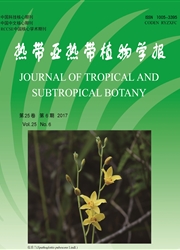

 中文摘要:
中文摘要:
为了解生姜(Zingiber officinale Roscoe)根茎的发育过程,在光学显微镜和电子显微镜下对不同发育时期的生姜进行显微和超微结构观察,并对分泌腔的发生发育过程进行了研究。结果表明,幼嫩期的生姜,表皮以内的基本组织可大致分为皮层、拟内皮层和中柱。次生加厚分生组织起源于中柱外侧一些细胞,细胞分裂和体积增大促使生姜发育。薄壁细胞内有大量的淀粉粒且其数量、形状和大小因发育时期而不同。分泌腔广布于生姜中,其发育过程可分为3个阶段:分泌腔原始细胞团形成、分泌腔的发生和成熟分泌腔形成。生姜精油主要在线粒体、质体和细胞质中合成。本研究为生姜药用资源的开发利用提供了理论依据。
 英文摘要:
英文摘要:
In order to understand the development process of rhizome of Zingiber officinale Roscoe, the microstructure and ultrastructure of Z. officinale rhizome at different developmental stages were studied under light and electron microscopes, and the developmental process of secretory cavities in rhizome was also observed. The results showed that there were cortex, endodermoid layer and central cylinder within epidermis in young rhizome. The secondary thickening meristem originated from the cells located in the outermost of the central cylinder. Cell division and enlargement resulted in the development of rhizome. There were a lot of starch grains in parenchyma cell, which varied in shape, size and number during the development. Secretory cavities were widely distributed in Zingiber. There were 3 stages during the whole development: the formation of original cell groups, the ontogenesis of secretory cavities and the formation of mature secretory cavities. The ginger essential oil mainly synthesized in the mitochondria, plastid and cytoplasm. This research supplied theory foundation for medicinal exploitation and utilization of Z. officinale.
 同期刊论文项目
同期刊论文项目
 同项目期刊论文
同项目期刊论文
 Calcium distribution during pollen developmentof Uncaria hirsuta Havil. (Rubiaceae), with specialref
Calcium distribution during pollen developmentof Uncaria hirsuta Havil. (Rubiaceae), with specialref 期刊信息
期刊信息
